It's celebrated in all of the provinces and territories of Canada, save Quebec, which calls the date National Patriots Day and celebrates those who fought against the British colonial power of the province back in 1837.
Following the death of Queen Victoria in 1901, the celebration was formally given the name Victoria Day. Today, various cities will hold parades, with the largest being in Victoria, British Columbia. Fireworks displays are also common.
Queen Victoria became the Queen of the United Kingdom on June 20, 1837 at the age of just 18 when the third of her late father's three older brothers, King William IV, passed away at the age of 71 with none of the three brothers leaving any legitimate surviving children to inherit the throne ahead of her.
She married Prince Albert in 1840 and had nine children together. Her reign would last 63 years and seven months, during which time there were great changes in industrial, cultural, political, scientific and military changes in the United Kingdom, as well as great expansion of the British Empire - a time which came to be known as the Victorian Era.
Beloved in Canada, Victoria, British Columbia, Victoria Island in Nunavut, Regina, Saskatchewan, Victoria, Newfoundland, Victoriaville, Quebec and numerous hospitals, bridges, streets, parks and even Queen's University are named in her honor, as were any number of hockey teams (roughly 25).
The most successful of the hockey teams named in her honor include the second team to ever hold the Stanley Cup, the Montreal Victorias in 1895, however, despite the Victoria's having won the Amateur Hockey Aassociation of Canada championship in 1895 but were not originally awarded the cup, as the trustees of the cup has already accepted a challenge for the cup, still held by the Montreal Hockey Club, from Queen's University of Kingston, Ontario.
The Montreal Victorias would retain control of the cup until March of 1899, which included a defense of the cup against the Winnipeg Victorias in February of 1899, won by Montreal 5-3 in a two-game, total-goals series, the third and final time the two Victorias would meet head to head for the Stanley Cup, with Montreal prevailing twice, in 1896 and 1899.
font for the "V" on their sweaters from earlier
The Winnipeg Victorias would regain control of the Stanley Cup in late January of 1901, just nine days after Queen Victoria's passing. Winnipeg retained their grip on the trophy until March 17, 1902. They would attempt to regain the cup through a challenge in February of 1903, as would the Montreal Victorias a month later, but neither were successful.
The Ottawa Victorias challenged the Montreal Wanderers for the cup in 1908, as did the Moncton Victorias in 1912 when they met the Quebec Bulldogs, but both were turned away. The final games of the challenge era of the Stanley Cup again involved the name Victoria, but this team were the Victoria Aristocrats from the city of Victoria, BC, who fell to the Toronto Hockey Club in March of 1914.
From that point on the Stanley Cup became an annual competition between the champions of the top professional leagues that had emerged, the National Hockey Association and the Pacific Coast Hockey League. It would take 11 years under this arrangement, by which time the PCHL had been absorbed by the Western Canada Hockey League, for the name Victoria to once again appear on the Stanley Cup when the Victoria Cougars (the same franchise once known as the Aristocrats) would defeat the Montreal Canadiens 3 games to 1 in 1925. The Cougars would return to the finals again in 1926, only to lose to the Montreal Maroons in the final Stanley Cup playoff before the WHL folded.
The folding of the WHL led to a series of developments, which saw the Victoria Cougars cease to exist and their roster being transferred to a new expansion club, the Detroit Cougars of the 11-year-old National Hockey League, who became sole holder of the cup, ending the "Victoria Era" of the Stanley Cup.
Today's featured jersey is an 1895-96 Winnipeg Victorias jersey. This sweater with the buffalo logo was worn by the Winnipeg Victorias, which unusually had no imagery, such as a "V" or crown to even suggest the team name of Victorias. One can only imagine the reaction today if a team named after a queen was represented with an image of a buffalo!
This next video contains footage of the funeral of Queen Victoria and a brief overview of her reign as Queen.


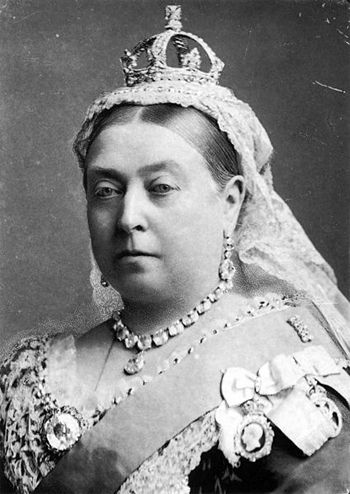
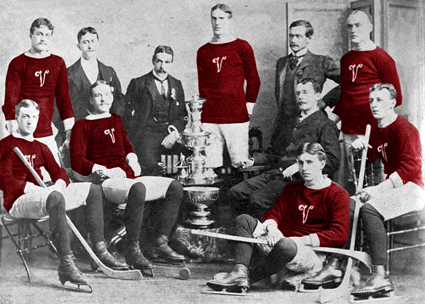
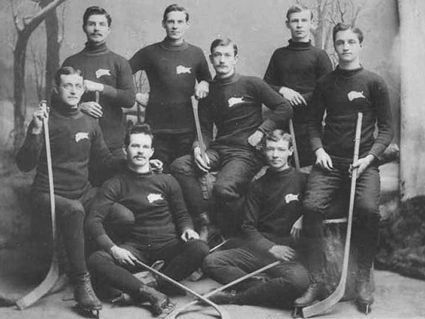
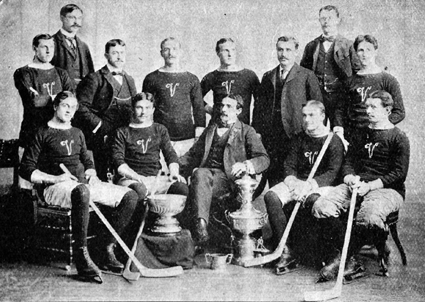
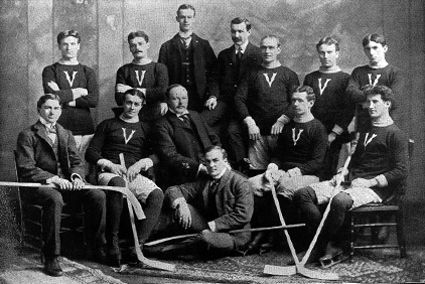
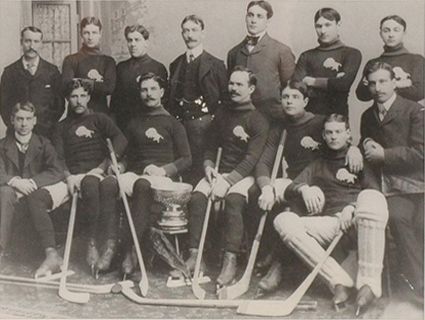
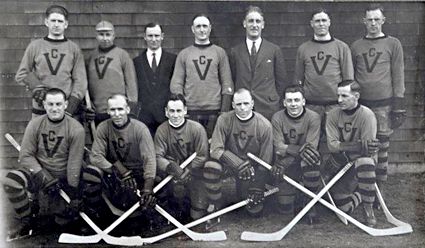
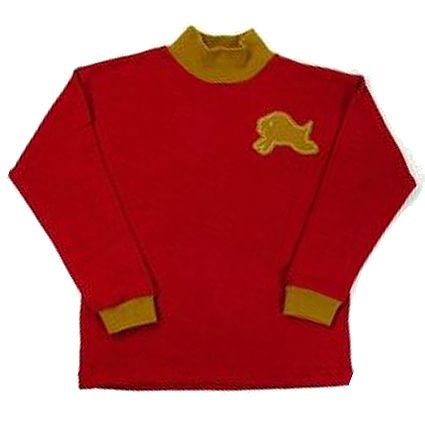











No comments:
Post a Comment
We welcome and encourage genuine comments and corrections from our readers. Please no spam. It will not be approved and never seen.